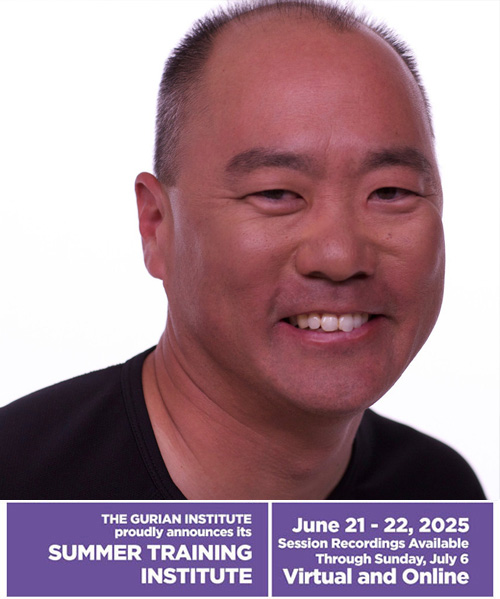My Brother’s Keeper – An Essential Alliance
By Michael Gurian, Founder, the Gurian Institute, and author of THE WONDER OF BOYS
President Obama’s My Brother’s Keeper Initiative has the capacity to do great things for our sons. Over the last three decades, we have seen the gradual decline of important markers for all of our boys — mental health and behavioral wellness, academic performance (noticed both in low grades and low standardized test scores), college attendance, and career strength. These issues face boys throughout the industrialized world, as data from the latest OECD study shows.
Boys are struggling to succeed in cultures that seem to believe that 1) boys are privileged and will do fine without boy-specific support and/or 2) boys fail to flourish because they refuse to give up masculine dominance and defect. White boys fit, for most pundits, in the former category and boys of color fit, for the same or other pundits, in the latter.
As a mental health counselor, I began working with boys and their families in the late 1980s. My hometown, Spokane, Washington, included only a handful of therapists who specialized in male health (out of hundreds of therapists in the area). Caucasian, I came from a troubled background, having been the victim of both physical and sexual abuse as a boy: both my heart and head longed to help families of the next generation to live better lives. As my counseling practice evolved, I worked with children and families of all races, creeds, and colors, and discovered two important things about boys.
• First, one group of boys did not corner the market on pain; all races and groups of boys were hurting, including white boys.
• Second, boys of color were, on average, so far off health and wellness markers that the situation felt epidemic.
As I began public and political outreach regarding this situation, walls of denial rose in social service and governmental agencies. Everyone cared about children, but caring about boys was difficult, given the political fervor with which our culture was being taught that all males have either unearned privilege or a deep rooted defect of masculine villainy, while all females are potential victims of the privileged and villainous males. Though most professionals knew the truth–only some males have privilege and/or are defective and only some females are victims–political reality lived in a power paradigm that allowed for blanket denial of the needs of males.
As I began writing about this, my wife and I had two daughters—we saw plainly the issues girls face in society, but, too, we realized how difficult the lives of boys had become. Having daughters helped me to find no zero sum in either privilege or suffering, and remain an advocate for both boys and girls. It also helped me understand the androphobia our academic and government cultures had developed—a fear of males and masculinity. That fear was driving much of our society’s policy decisions.
Perhaps the single most obvious evidence of the tacit androphobia has been our culture’s systematic degradation of father-attachment. Over a period of five decades, with special impact among children of color, fathers began to disappear from millions of child-raising units. A new meta-study, “Proposal to Commission to Create a White House Council on Boys and Men” recently confirmed that without fathers and/or father-figure males embedded into the lives of boys, social construction of healthy adult male life dissolves, and thus dissolves the safety of females as well as much of the stability and adaptability of a civilization.
For decades, boys of color have been trying to inspire us to look at all of this—they are weeping, yelling, and pushing at us to look more carefully at our superficial political ideas about males and masculinity. As their physical health markers have remained low, their mental health markers have declined, their behavioral issues, including violence, have increased, and their motivation to live and serve have diminished, they provide a crucible for understanding the state of boyhood and manhood in America. We have barely listened. I will never forget a comment by a Department of Justice official over a decade ago regarding when I asked him why so much money is spent on programs to help girls and women (which, we both agreed—both of us fathers of daughters–is money well spent) but so little on males. He said sadly, “We do sort of budget for males—in our prison budgets.”
Interestingly, even when white boys began to kill classmates in schools across the country, our government barely reacted with in-depth process. These white boys entered a conversation about violence and its causes that had begun regarding boys of color in urban areas, but in the media and in political spheres analysis of the struggles of these boys dissipated very soon after it exploded. Our gender politics keep us from dealing with the real issues boys and men face, very few of which involve unearned privilege. Most male issues, including the issues faced by boys of color, involve our society’s inability to nurture the nature of males themselves. We have spent many powerful decades understanding how to nurture the nature, dreams, and hopes of girls and women and will continue to do so. However, we have not spent much time on the complex nature of our boys and men.
What Works with Boys of Color
After a successful two year pilot study at the University of Missouri-Kansas City from 1997 -1999, reported in Boys and Girls Learn Differently, a national network was formed in Colorado Springs, Colorado to provide pilot programs, train professionals, and conduct research in issues facing children of both genders, especially students and children in distress. Over the last fifteen years, this grass roots network has developed training programs for schools, parents, communities, and policy-makers that close achievement gaps, lower discipline referrals, generally improve student behavior, embolden parent involvement, and improve teacher effectiveness in both public and private schools.
Here are some data from schools that have utilized the teacher and community training on behalf of boys of color. https://gurianinstitute.com/success/test-data/. More than 60,000 teachers have been trained in the Institute’s programs and interventions, from more than 2,000 schools, with some of those schools becoming “Model Schools.” We believe the reason for the success of these programs is their holistic nature: they provide teachers and others the training they did not receive in their college, graduate school, or medical training regarding the whole boy.
This holistic training is not a new curriculum; rather, it helps teachers and others teach and mentor boys (and girls) in all present curricular, extra-curricular, and behavioral areas. Its holistic nature grows from its fidelity to all three fundamental areas of child development: nature, nurture, and culture. This whole-boy heuristic draws on brain scans and cultural anthropology, biochemical data and parental influence, racial and ethnic belonging as well as the cultural and racial elements of male isolation.
The following HEROIC logic-model is one of the holistic paradigms our team has developed from and in our work with boys of color.
Honor (Compassion and Character development)
Enterprise (Important and Sacred Work)
Responsibility (from Responsibility comes Respect)
Originality (Personal and Ethnic Identity Development)
Intimacy (Attachment in Key Bonds and Relationships)
Creativity (Making, Doing, and Creating Everyday).
Because boys of color often feel a double-layered sense of isolation, their communities need support to help these boys discover three safe circles of family development (nuclear, extended, and communal). As our team works in disadvantaged communities, we ask for conversation on outside-the-box proposals toward the HEROIC such as the development of simultaneous mentoring programs–for early childhood age boys and for adolescent boys–in which men mentor the adolescents simultaneous to adolescents mentoring the younger age boys. This is a three-generational attachment and mentoring program that can nurture all parties toward greater mental and emotional health.
We also believe a serious conversation should begin among national policy-makers about a “National Citizenship Draft” in which all young people of all races engage in mandatory one year paid national service during late adolescence.
Over the last fifteen years, we have discovered one portion of what works and what doesn’t. Especially with boys of color, any program or intervention that focuses on only a single element of nature, nurture, or culture does not tend to work. Some quick cultural gains can appear from any intervention, of course, but those gains are quickly lost. If nature, nurture, and culture are not knit together in theory and practice, educational and community dilemmas constantly reappear.
The Decade of the Boy
My Brother’s Keeper is a much-needed initiative toward greater public health. I hope it will help our nation launch a “decade of the boy” that will bring to high offices and public forums all of the grass roots work that is going on successfully in so many impoverished and disadvantaged communities, and all of the new holistic logic-models available. Hopefully, too, this “decade” will last longer than a decade—to solve the problems that all our sons face we will need the same kind of social investment that we’ve made over the last fifty years as we’ve worked to solve problems faced by girls and women.
If you would like more exact information on the specific issues boys face, please click www.whitehouseboysmen.org. If you are interested in research-based interventions to assist schools and communities in solving issues faced by boys of color, please click www.gurianinstitute.com. On behalf of our whole team, I join colleagues from around the country to applaud the White House.










